Now that New York is officially back open for business, so is the American Kennel Club’s Museum of the Dog.
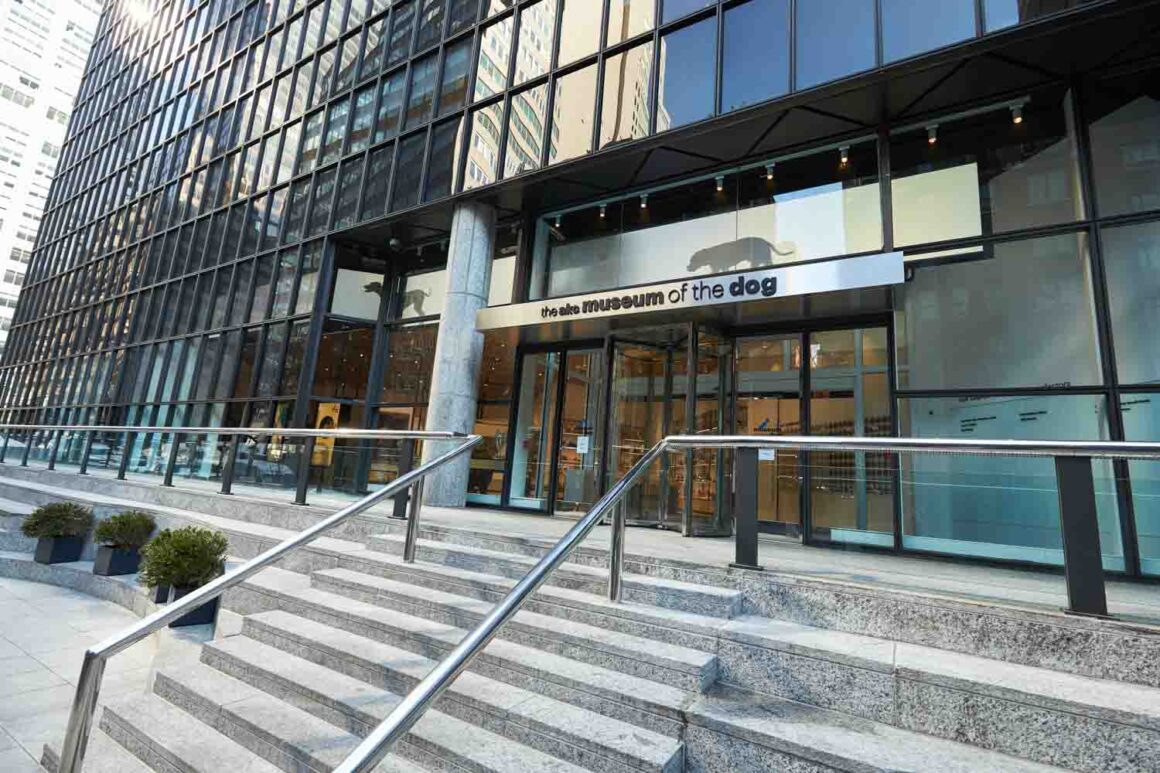
Clark and I went last week to check it out. It was my first visit back since before the pandemic and I have to say I was impressed by the precautions the staff there have taken for your safety. The video below tells you more about their Covid 19 mitigation protocols.
I was most impressed with the signage around the museum urging visitors to be careful and the styluses the MOD provides so you can use their interactive experiences safely.
Interactive Experiences
Speaking of interactive experiences, these video displays are a lot of fun. There are several stations in the museum where you can learn about all the AKC-recognized breeds or learn how to train a puppy.
I must say however that I have a bone to pick with the MOD about one of these experiences. At one display you can find out what dog you look like.
Here’s my result:
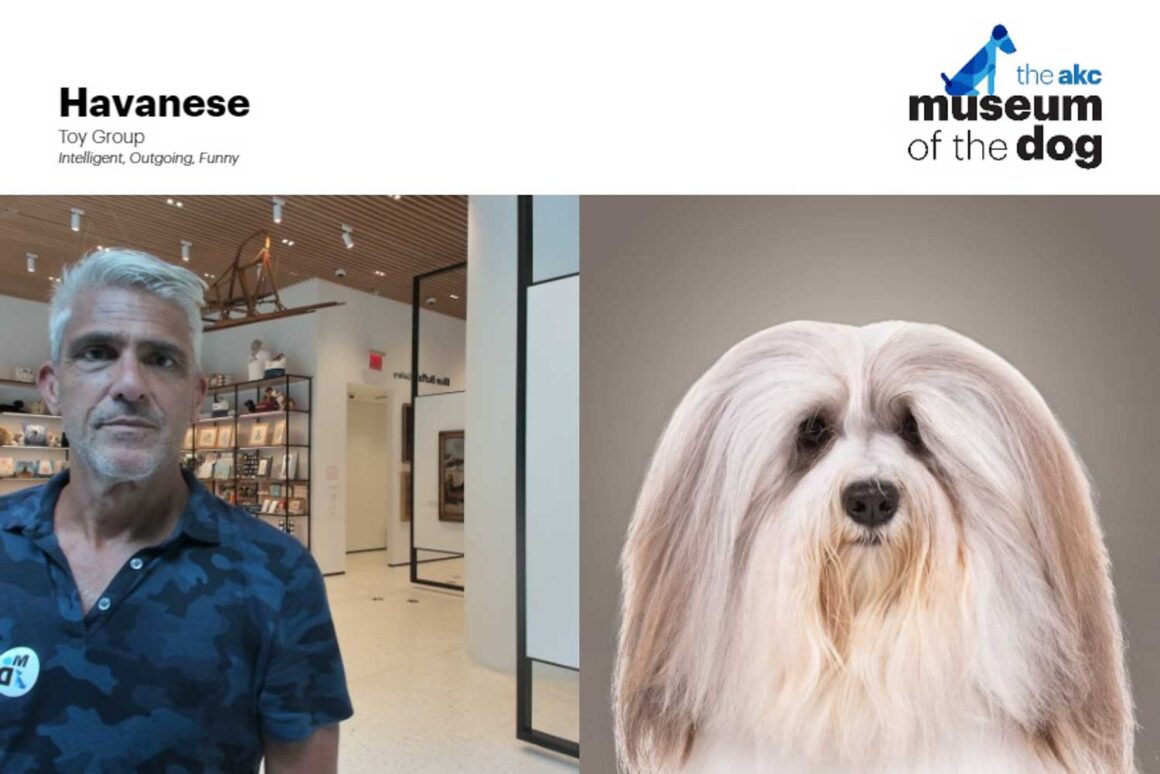
Hmm. I look like a Havanese? A teeny tiny Havanese? From the Toy Group? I’m six feet tall and weigh 190 pounds. I don’t think so. (I will, however, accept the “intelligent” descriptor!)
Apart from that minor… disagreement… we had a thoroughly fun time at the MOD.
The Museum of the Dog is primarily a gallery of dog-related art. Two years ago it moved to New York from St. Louis, where it’s been a hit ever since. You’ll find the museum on the first floor of an office building on Park Avenue, the main entrance is on 40th Street. It occupies a brightly-lit, airy, modern storefront over two floors.
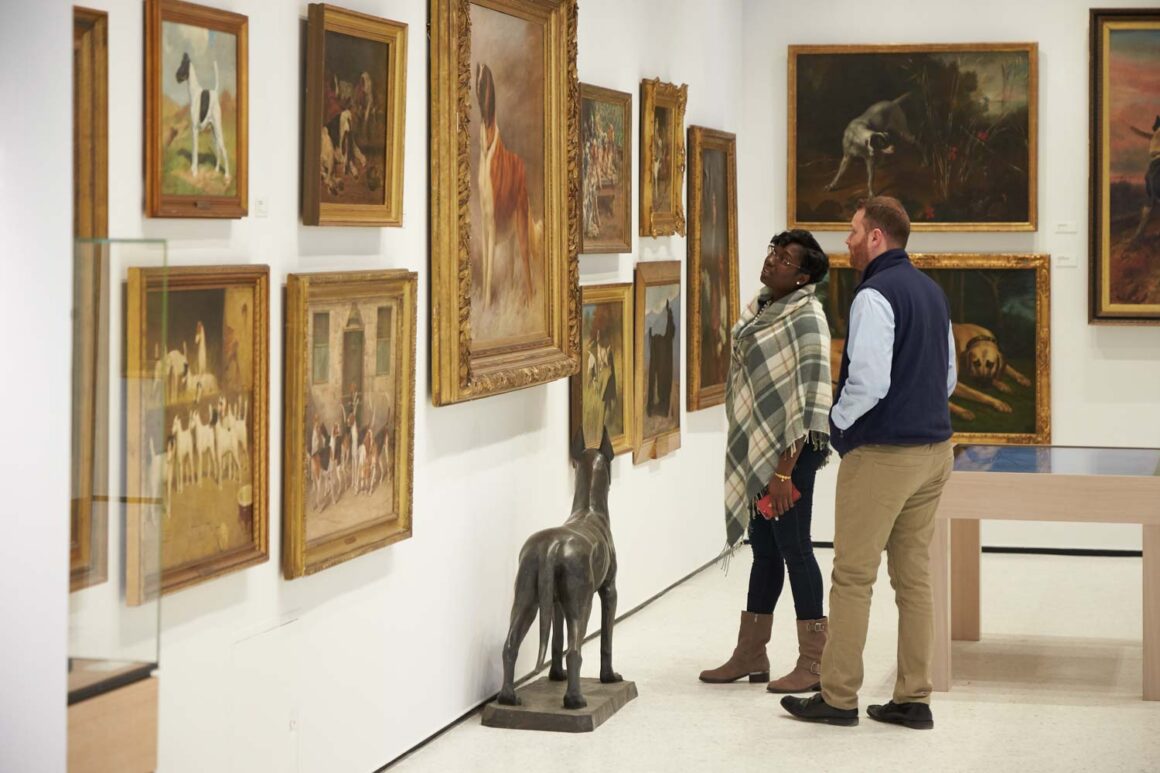
Permanent Collection
The first floor is where many paintings from the permanent collections of both the American Kennel Club and the Museum of the Dog are on display. The majority of the paintings we saw were portraits.
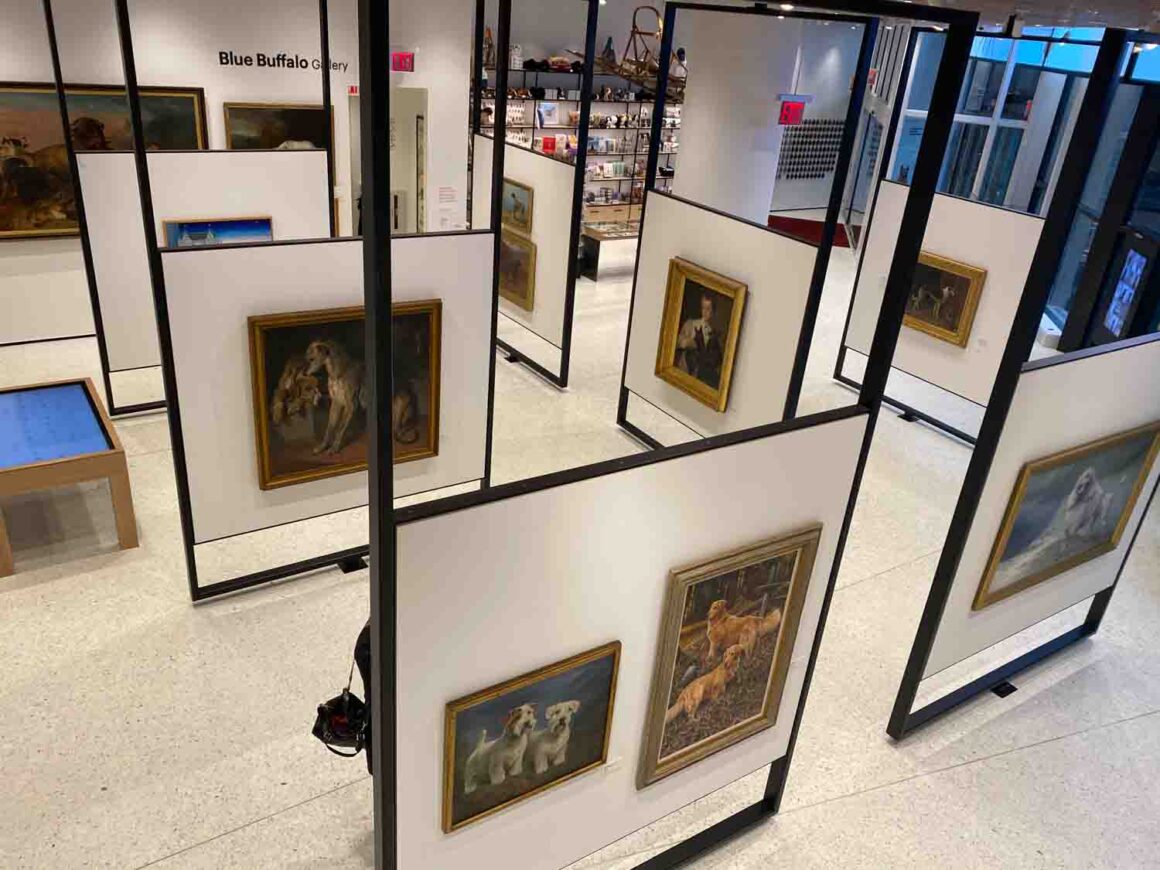
Of course, dogs have been seen in art since ancient times, but the category of pet portraiture came into to its own in the 19th century. Most modern day breeds date back to the 1800s. Dog breeders are very concerned about “conformation,” or how well dogs match desired standard breed characteristics. Painting a pure bred dog’s portrait was a way to make a permanent record of the dog’s attributes.
Another big reason pet portraiture took off? Queen Victoria.
She was a huge dog enthusiast — it’s said that she had more than 50 dogs at one point — and commissioned many portraits of her pets. Members of society at the time took their cues from the queen and followed suit.

There are two new important acquisitions on the first floor: “The Amsterdam Dog Market” by Abraham Honduis and “Field Trial at Bala, North Wales” by George Earl.

“The Amsterdam Dog Market” is considered Honduis’ masterpiece. You can read more about it here at the College of William and Mary website. “Field Trial at Bala, North Wales” is a veritable “who’s who” of the canine world in England at the time. The artist, George Earl, was the patriarch of a family of animal portrait painters. (I am going to do a profile of his daughter Maud Earl soon.)
Top Dog Exhibition
When you’re done on the first floor you can take an elevator up to the second floor, or walk up the stairs. I say take the stairs. The staircase wraps around a two story display case featuring many small statues, figurines, and other likenesses of dogs.
The current second floor exhibition is called Top Dogs. It takes a look at the top ten breeds recognized by the AKC. The dogs featured are the Labrador Retriever, French Bulldog, German Shepherd Dog, Golden Retriever, Bulldog, Poodle, Beagle, Rottweiler, German Shorthaired Pointer, and Dachshund. (I’m a little disappointed that the Weimaraner usually ranks in the 30s.)
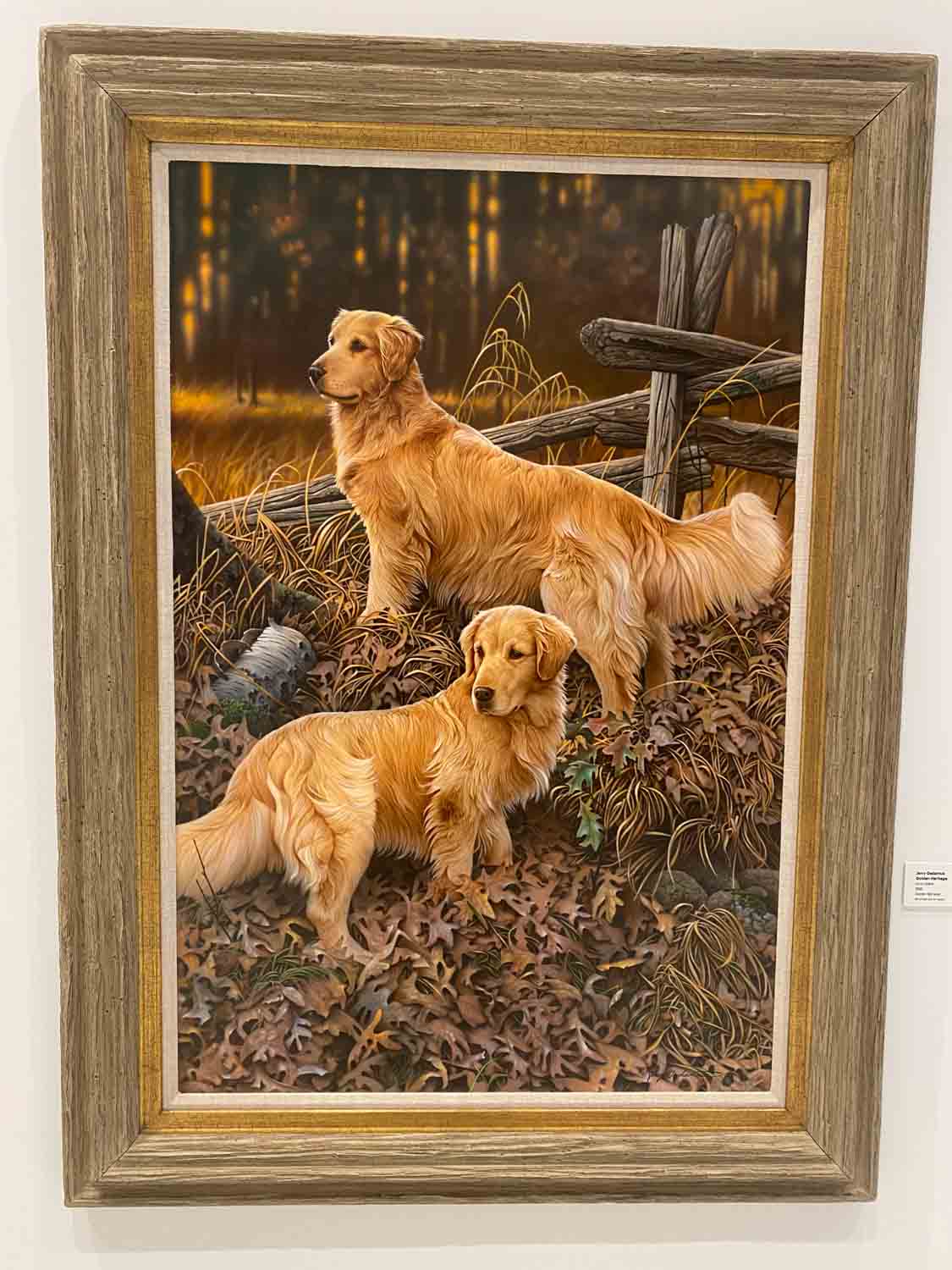
This exhibition runs through August 29.
The second floor is also home to the museum’s library and lecture space. (Check out Urban Dog’s calendar for events at the museum.)
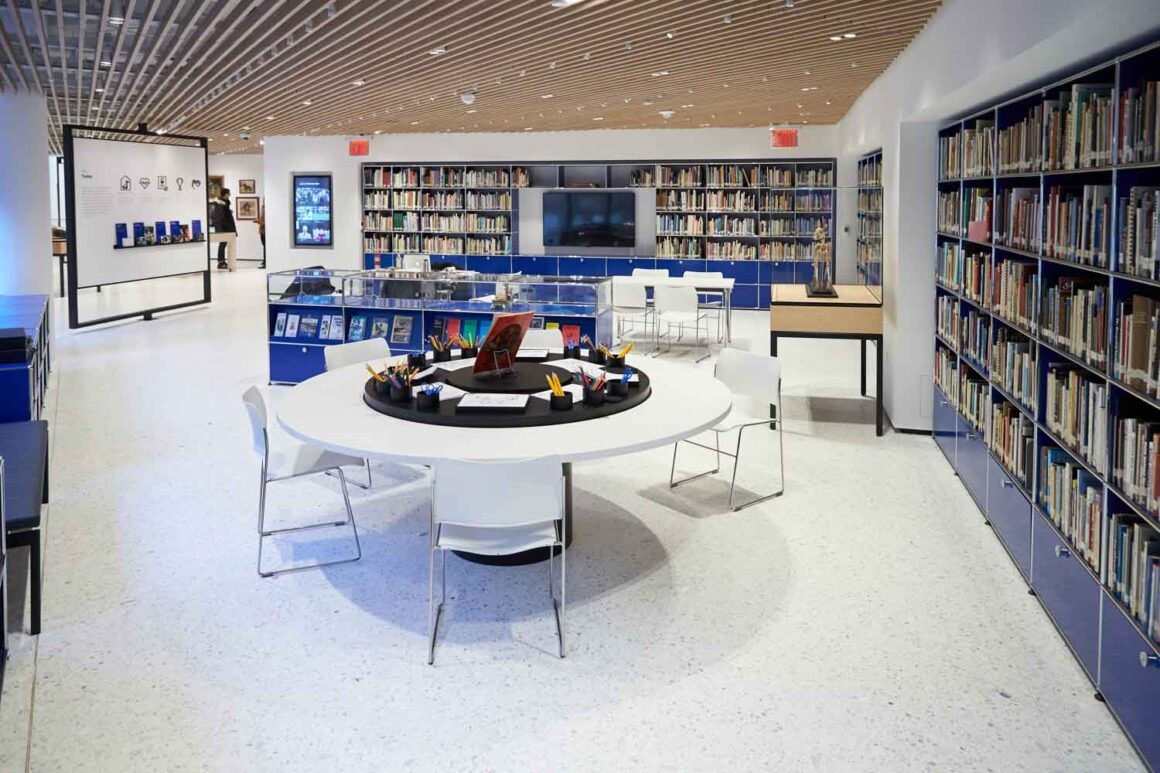
On your way out, visit the store. I bought a Weimaraner magnet in honor of Bodhi!
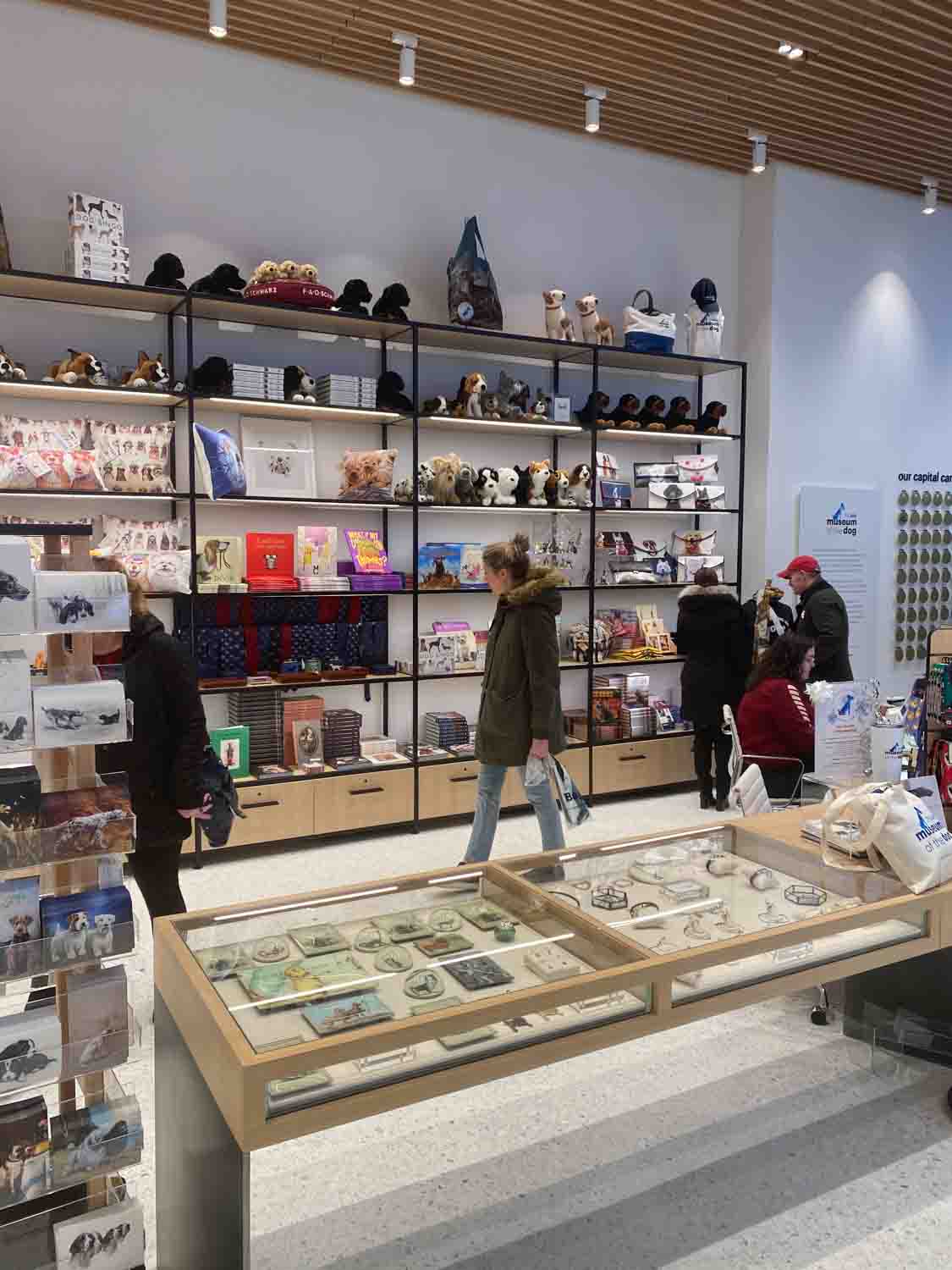
The Museum of the Dog is open Wednesday through Sunday from 11:00 am to 6:00 pm.
Click here to visit the MOD website.






